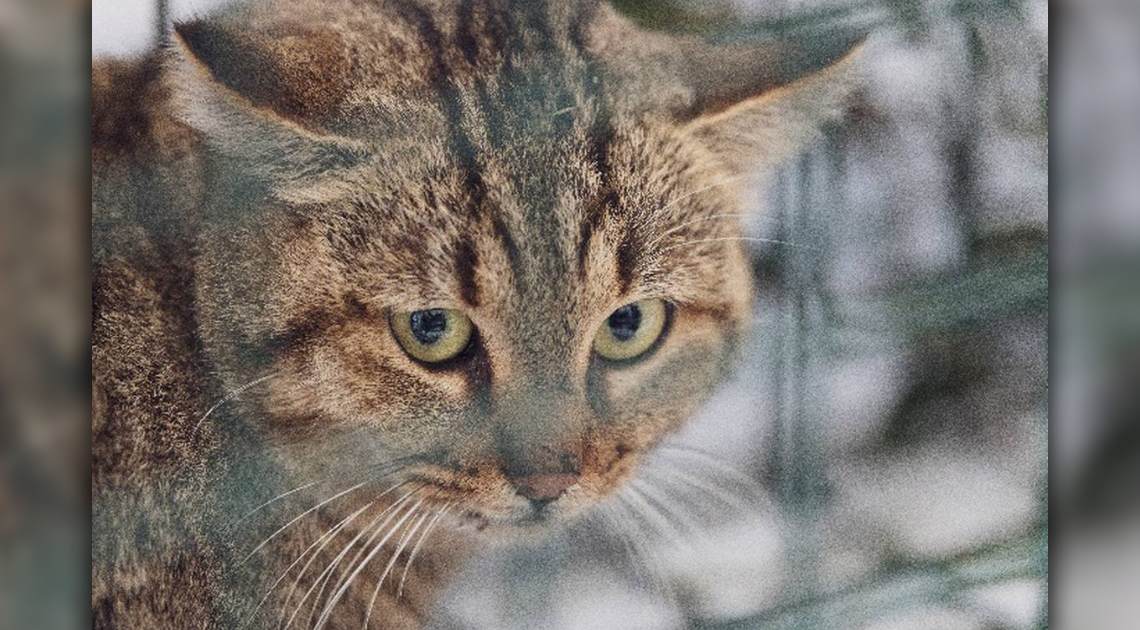The fourth-largest island in the Mediterranean, Corsica sits off the southeast coast of France and west of the Italian Peninsula. It has a long history, including being the birthplace of Napoleon Bonaparte, and today, approximately 280,000 people call it home.
But the island’s cutest, and probably most mischievous, inhabitant is a rarely seen creature known locally as a “ghjattu volpe,” or “cat-fox.” Having long been a part of Corsica’s folklore, the cat-fox was only just recently discovered to be its own species.
Here’s everything you need to know about this marvelous critter, what sets it apart from other felines, and its potential origins.
Small But Mighty Cat-Foxes
It all started in a chicken coop. In 2008, a coop in the Corsican commune of Olcani inadvertently captured an animal that had remained elusive for centuries: the cat-fox. Corsican mythology had long discussed these furry rascals and their tangles with local shepherds. (Apparently, the felines had a nasty tendency to appear from the forest, ready to attack the udders of ewes and cattle.)
Fast forward to today, and there’s still much to learn about the cat-fox. Scientists have mostly relied on feline essence on wooden sticks to gather cat-fox fur for genetic testing. (The cats rub themselves on the sticks when they smell the scent, leaving their hair behind.)
From Cat-Fox Fur Samples to Live Specimen
What have researchers discovered by analyzing cat-fox fur and live specimen? Among their greatest discoveries has been the realization that cat-foxes are not related to the European wildcat. Instead, they are their own unique species specific to the French Mediterranean island! Believe It or Not!, through genetic analysis, scientists have “revealed a unique genetic strain to the wild cats.”
The elusive striped “cat-fox” familiar mostly to Corsican shepherds and as a source of intrigue to scientists, is indeed its own species specific to the French Mediterranean island, the French office for Biodiversity announced Thursday
➡️ https://t.co/Ji1O0kOdru pic.twitter.com/TrRQxDJabk— AFP News Agency (@AFP) March 16, 2023
The French office for Biodiversity stated, “Genetic sampling clearly distinguishes the ring-tailed Corsican cat-foxes from mainland forest felines and domestic cats.” Scientists now have plenty of new insight behind the feline’s unique characteristics.
These include “highly developed” canine teeth, short whiskers, and “very wide” ears. They measure roughly 35 inches long from tail to head, and they have a distinctive ringed tail with two to four rings and a black tip. They boast a silky and dense coat that naturally deters lice, fleas, and ticks. And cat-foxes have “very dark” hind legs, stripes on their front legs, and a reddish-brown tummy.
Solving the Mystery of Cat-Fox Origins
But why the clandestine presence? Because it helps the feline avoid its number one natural predator on the island: the golden eagle.
Yes, you read that right! On Corsica, the birds hunt the cats — although we can assume it goes the other way with smaller feathered friends. (After all, the first live specimen turned up in a chicken coop, and it was there for more than the view.) Fortunately, the remote habitat the cat-fox prefers on Corsica is covered in plants and water, providing plenty of protection from raptors.
Since 2016, the ONCFS has trapped 12 of 16 island felines. During examinations before re-release, scientists have gathered plenty of data and now that the cat is recognized as a new species, scientists hope to keep the feline protected.
By Engrid Barnett, contributor for Ripleys.com










Comment Your Reaction